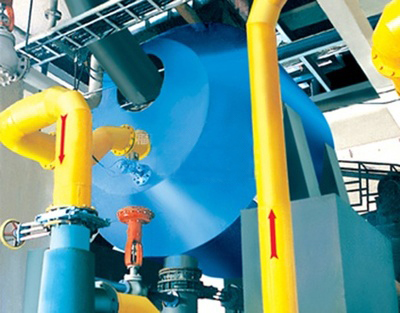Used in paper industry for breaking pulp sheet, broke and waste paper. Three-spiral rotor can achieve gentle breaking pulp under high consistency, thereby not breaking impurities at the same time of defiberating and separating ink. Fitted with steel plate type cast steel rotor with high wearability, ensure that the pulping concentration more than 15%.
The system consists of D-type hydrapuler,ragger,cutting machine,dregs well, grab bucket impurity separator, drum screen and PLC controller.


Compared with the traditional hydrapulper,it could shorten the time of pulp breaking and increase productivity without increasing the volume and power. D-type hydrapulper rotor and the outlet tray are above the bottom surface of pulper vat to form a low-pressure flow area around the rotor so as to make the coarse impurities flow from the heavy impurity outlet into the dregs well during pulping and the discharge impurities by grab buck et regularly. Affected by turning pulp flow, the winding impurities in waste paper are twisted into the rope, which can be pulled out by the ragger. The remain pulp and light impurities flowing into the dregs well will be sent to the impurity separator for prcession with periodicity. The pro- cessed accept is integrated with the pulper accept and the n the pulp will enter the next working procedure. After washed, the coarse impurities will be sent to the drum screen for discharge out of the system The recycled pulp will flow into the pulper. The working procedure of the complete system will be under control of PLC.
Components:
Bale Breaker, chain Conveyor, D-type Hydrapulper, Drum Screen, Dregs Well, Impurity Separator, Ragger, Cutting Machine, Pulp Pump, Grab Bucket
Features :
2.This machine is one of the corollary equipment in continuous pulping system, it has the advantages of large production capacity, compact structure, convenient to install and repair.
Service:

